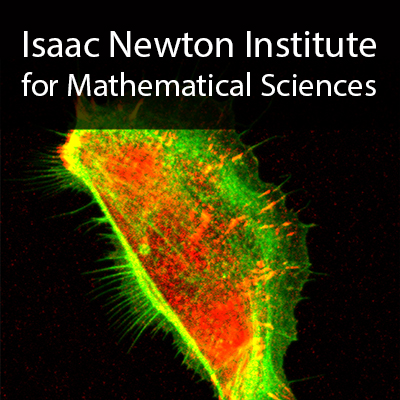Cellular patterning in plant roots
40 mins 20 secs,
587.26 MB,
MPEG-4 Video
640x360,
29.97 fps,
44100 Hz,
1.94 Mbits/sec
Share this media item:
Embed this media item:
Embed this media item:
About this item

| Description: |
King, J (University of Nottingham)
Friday 18th September 2015 - 15:30 to 16:15 |
|---|
| Created: | 2015-09-29 17:07 |
|---|---|
| Collection: | Coupling Geometric PDEs with Physics for Cell Morphology, Motility and Pattern Formation |
| Publisher: | Isaac Newton Institute |
| Copyright: | King, J |
| Language: | eng (English) |
| Distribution: |
World
|
| Explicit content: | No |
| Aspect Ratio: | 16:9 |
| Screencast: | No |
| Bumper: | UCS Default |
| Trailer: | UCS Default |
| Abstract: | Co-authors: Anthony Bishopp (University of Nottingham), Nathan Mellor (University of Nottingham), Daniele Muraro (University of Nottingham), Leah Band (University of Nottingham)
Multicellular organisms comprise many different and highly specialized cell types arranged in specific patterns in space and time. The formation of pattern is encoded in genetic and environmental responses. All multicellular organisms start as a single cell. This cell and its daughter cells divide to produce new cells. These divisions are highly orchestrated and both division and growth occur asymmetrically.Plant cells are locked into place by substantial cell walls. All these cells have the same genetic information and positional cues are required to assign specific identities to cells in defined positions. Roots provide an ideal system to investigate cellular pattern as cells are arranged in well-defined lineages extending out of an organised centre.During embryogenesis, cells in the embryonic root are arranged in a radially symmetric pattern of concentric rings. However, as the seedling grows new cell fates (xylem and phloem) are assigned in the central part of the root to transport water and nutrients throughout the plants. The differentiation of these transporting cells represents a crude symmetry breakage with a shift from radial to bisymmetry (two planes of symmetry at 90º to each other).A network of interactions able to produce this symmetry break will be presented. Experimental evidence demonstrating the involvement of these components will be presented and a mathematical model that predicts how these components act in space and time to produce pattern will be described. How this network can be manipulated to produce alternative patterns will also be noted. |
|---|---|
Available Formats
| Format | Quality | Bitrate | Size | |||
|---|---|---|---|---|---|---|
| MPEG-4 Video * | 640x360 | 1.94 Mbits/sec | 587.26 MB | View | Download | |
| WebM | 640x360 | 596.43 kbits/sec | 176.27 MB | View | Download | |
| iPod Video | 480x270 | 522.01 kbits/sec | 154.21 MB | View | Download | |
| MP3 | 44100 Hz | 249.82 kbits/sec | 73.86 MB | Listen | Download | |
| Auto | (Allows browser to choose a format it supports) | |||||

